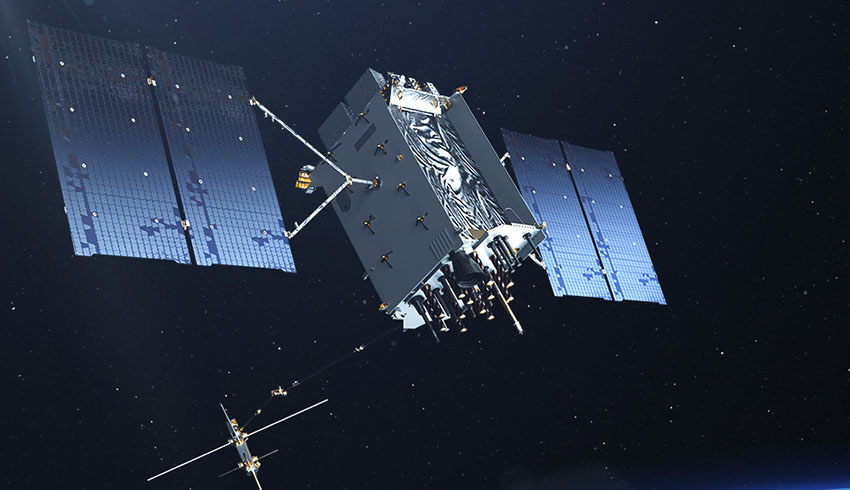About 89 minutes after a 6:24pm EST lift-off from Cape Canaveral Air Force Station, Florida, US Space Force and Lockheed Martin engineers at the company's Denver Launch & Checkout Operations Centre declared GPS III SV04 "separated" from its SpaceX Falcon 9 rocket and "flying" under their control.
In the coming days, GPS III SV04's onboard liquid apogee engine will continue to propel the satellite towards its operational orbit. Once it arrives, the engineers will send the satellite commands to deploy its solar arrays and antennas, and prepare GPS III SV04 for handover to Space Operations Command.
Tonya Ladwig, Lockheed Martin's acting vice president for navigation systems, said, "With GPS III we are focused on rapidly fielding the best capabilities to the Space Force's Positioning, Navigation and Timing (PNT) Mission. We are proud of our industry-government team on the launch of GPS III SV04. GPS III SV05 is already 'available for launch' and just waiting to be called up."
GPS III SV04 is the latest next-generation GPS III satellite Lockheed Martin designed and built to help the US Space Force modernise today's GPS satellite constellation with new technology and capabilities. GPS III satellites will provide significant capability improvements over previous GPS satellites, including:
- Three times better accuracy;
- Up to eight times improved anti-jamming capabilities; and
- A new L1C civil signal, which is compatible with international global navigation satellite systems, like Europe's Galileo, to improve civilian user connectivity.
GPS III SV04 will also be the 23rd Military Code (M-Code) signal-enabled GPS space vehicle on orbit, continuing the Space Force's plan to fully field the more-secure, harder-to-jam and spoof GPS signal for military forces.
"So many people rely on GPS every day. Continuing to invest in GPS by adding new capabilities like those coming with GPS III/IIIF will ensure GPS remains the world's 'gold standard' for PNT and just makes sense," Ladwig added.
GPS is part of the US's critical national infrastructure, driving an estimated $300 billion in annual economic benefits and responsible for $1.4 trillion since its inception. Globally, more than 4 billion military, civil and commercial users depend on GPS' positioning, navigation and timing signals.
Lockheed Martin is a critical part of the GPS III team led by the Space Production Corps Medium Earth Orbit Division, at the US Space Force's Space and Missile Systems Centre, Los Angeles Air Force Base, the GPS Operational Control Segment sustainment is managed by the Enterprise Corps, GPS Sustainment Division at Peterson Air Force Base.
The 2nd Space Operations Squadron, at Schriever Air Force Base, manages and operates the GPS constellation for both civil and military users.
Headquartered in Bethesda, Maryland, Lockheed Martin is a global security and aerospace company that employs approximately 110,000 people worldwide and is principally engaged in the research, design, development, manufacture, integration and sustainment of advanced technology systems, products and services.

